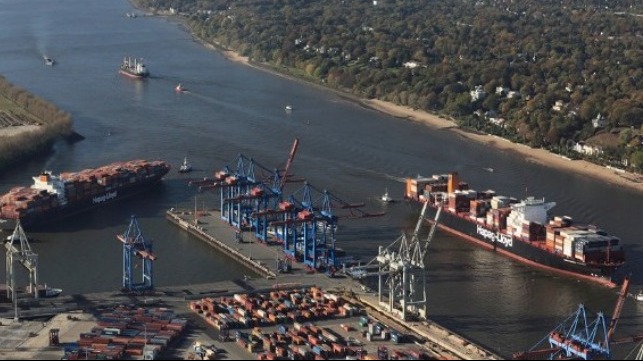North Sea Port Congestion at Critical Level, Hindering Global Trade

Supply bottlenecks and congestion in container shipping are becoming more entrenched and are impacting the global exchange of goods warns the Kiel Institute for the World Economy (IFW) in its latest update on Germany and global trade. According to the IFW, ship congestion in the North Sea has increased and compounded with issues around the globe is likely contributing to a full recovery in global trade and a further decline in container shipping rates.
The latest data update of the Kiel Trade Indicator shows an increase of 1.2 percent in global trade in August compared with the previous month (price and seasonally adjusted). In the EU overall, they report there is virtually no change in sight with imports and exports to remain relatively flat. For Germany's trade, however, the signs are negative, with both imports (-0.2 percent) and exports (-0.7 percent) in the red while the indicator value for Chinese exports is steeply negative (-4.6 percent). The U.S. is the strongest in the most recent Kiel Trade Indicator report with an increase of 1.8 percent for imports compared to July, and 0.3 percent for exports.
Price-adjusted exports of major industrialized countries are still below pre-pandemic 2019 levels, warns the institute while also saying that overall world trade is over 6 percent above its pre-COVID-19 levels. Only Italy and Japan are exporting above their pre-COVID-19 levels again in the G7 group according to the indicator with the gap for other countries ranging at down 8 percent for France and 7 percent for Germany while the U.S. is only 1 percent behind.
“Supply bottlenecks are likely responsible in part for this development," says Vincent Stamer, Head of the Kiel Trade Indicator. “Rising energy prices will put further pressure on the competitiveness of European companies in the short and medium term.”
According to its analysis, the IFW warns that congestion in container shipping is becoming entrenched at a high level. They calculated that around 11 percent of all shipped goods are currently stuck. In the anchorages observed by the Kiel Institute, congestion in the North Sea is the most serious for the first time. They reported that well over 2 percent of global freight capacity is at a standstill there and can neither be loaded nor unloaded. In the German Bight alone, 19 container ships are waiting to unload their goods, 2 more than 14 days ago.
They note a decline in volumes on trade routes including the vital ones through the Red Sea connecting the Far East and Europe, as well as a “cyclical downward trend” for congestion outside Chinese ports. However, they also pointed to the “skyrocketing queues off South Carolina and Georgia where the important port of Savannah is located.”
"Since the beginning of the year, freight rates for seaborne trade from Asia to Northern Europe and North America’s West Coast have dropped significantly from over $14,000 per container to $4,000 and $8, 000, respectively. However, congestion is preventing a return to pre-pandemic levels. High transportation costs are hindering a further recovery in global trade," concluded Stamer.
